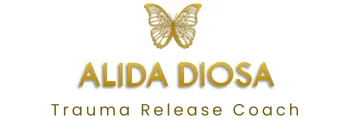
Triggers as Teachers | Journey to Emotional Freedom
“Until you make the unconscious conscious, it will direct your life and you will call it fate.”
— Carl Jung
Maria’s Story: An Unexpected Mirror
Maria sits across from her colleague, listening to the steady stream of complaints. Her chest tightens, her jaw locks, her breath grows shallow. An inner voice whispers: “Here we go again with the negativity.”
Usually, Maria would withdraw or judge. But today, curiosity interrupts: “What is this reaction trying to teach me?” In that pause, she realizes — this is not about her colleague at all. It is her body remembering the silence of childhood, when her own needs were dismissed. The trigger is not an enemy, but a teacher calling her back to unfinished truths.
What Are Emotional Triggers?
Emotional triggers are not flaws. They are the nervous system’s automatic responses to reminders of past wounds or unmet needs. A trigger bypasses rational thought, flooding the body with sensation and urgency before the mind can explain why.
sudden emotional surges
tightness in chest or gut
compulsive reactions that feel “too much” for the situation
Rather than weaknesses, triggers are encrypted messages from the psyche, pointing toward what longs for integration. You can learn more about my results driven process of integration and nervous system patterns release in The Journey
For more on this, read our blog on What Does Trauma Have to Do with Limiting Beliefs.
The Science of Triggers
Neurobiology: Within milliseconds, the amygdala (threat detection) hijacks the system, overriding the rational prefrontal cortex (LeDoux, 2015).
Cellular Memory: As Dr. Bessel van der Kolk showed, trauma imprints live in the body; speech areas go offline while the right brain lights up.
Polyvagal Theory: Triggers push us into fight/flight or collapse, guided by the vagus nerve’s constant “neuroception” of safety.
Epigenetics: Studies in Nature Neuroscience reveal parental stress can alter children’s gene expression, making them more sensitive to triggers.
Biochemistry: Dr. Candace Pert’s research demonstrates how emotions leave neurochemical traces in tissues, ready to be reactivated.
Science affirms what the heart has always known — our bodies are living libraries of memory, waiting to be read with compassion.
The Unfinished Business of Triggers
Most triggers carry what Peter Levine calls incomplete stress responses. A child who could not speak their truth, flee danger, or defend themselves carries that unspent survival charge. When a present situation resembles the past, the body seizes the chance to finish what it could not complete.
Seen through this lens, triggers are not disruptions to be eliminated but invitations to release stored survival energy and reclaim authenticity.
Somatic Practice: The PAUSE Method (5–7 minutes)
This practice can be used in real time — whether before speaking in a meeting, at a family dinner, or in the middle of an argument.
P — Pause and Notice
Stop. Take three breaths. Whisper inwardly: “I notice activation in me.”
A — Attune to the Body
Scan head to toe. Notice heat, pressure, or numbness. Breathe into constricted areas.
U — Understand the Message
Ask gently: “What are you protecting me from?” Listen for words, images, or body sensations.
S — Stabilize the Nervous System
Feel your feet press into the ground. Try box breathing (4–4–4–4). Offer gentle self-touch: hand on heart, arms wrapped around yourself.
E — Engage Consciously
From regulation, choose your next step — to speak, to boundary, or to simply observe. If activation returns, return again to PAUSE.
Triggers as Gateways to Wholeness
Your triggers often guard your deepest gifts.
The child who scanned for a parent’s moods may carry extraordinary emotional intelligence.
The adult triggered by injustice may embody a fierce devotion to fairness.
As we approach triggers not as enemies but as messengers, we reclaim exiled parts of self. Each integration is a doorway — from contraction into expansion, from protection into presence.
If you want to deepen this work, explore my Generational Trauma Rewiring Session a 50-minute experience designed to shift inherited emotional patterns and soften the weight of ancestral imprints.
For those feeling a deeper call: My signature program, the Emotional Freedom Accelerator, is temporarily open. It is an immersive path for those ready to move beyond individual practices and step into lasting transformation with guidance and one on one support. If this resonates, you are warmly invited to explore what’s possible.
Somatic Preparation for Social Spaces
Before stepping into a space where you expect activation — a networking event, reunion, or difficult conversation — try this:
Root: Plant your feet and imagine roots grounding you into the earth.
Hand Anchor: One hand on heart, one on belly. Breathe into both. Whisper: “I am safe in my body.”
Protective Boundary: Imagine a soft cocoon of light around you — filtering what enters, allowing only what nourishes.
Intention: Set a simple one: “I will allow one authentic moment today.”
This one practice is enough.
When Overwhelm Visits
If activation feels unbearable, collapse is not failure — it is protection.
Step aside into privacy.
Hands on chest, breathe gently.
Remind yourself: “This is temporary. My body is protecting me.”
If needed, ask a trusted person to sit with you, hold hands, or simply stay present until safety returns.
Reflection Prompts
What situations most often spark activation in me?
If my trigger had a voice, what would it say it is protecting?
How does my body speak when I am triggered?
What gifts might my sensitivity be guarding?
Return to Maria: Like Maria, you may find that reflection turns discomfort into discovery. The very moment that once felt like a cage can, with curiosity, reveal itself as a compass pointing you back toward choice and connection.
FAQ: Working with Triggers
Q: Why do I get triggered by things others brush off?
Because your nervous system carries a unique map. What seems small to another may touch an old wound or boundary in you. It is not weakness — it is personal wisdom.
Q: Will my triggers ever go away?
Some soften with time, others remain as subtle guides. Sensitivity is not a flaw; it is often a signpost toward values, gifts, and needed boundaries.
Q: How can I work with triggers without drowning in trauma?
By balancing awareness with joy. Attune when activation arises, but also nurture play, beauty, and connection. Triggers are teachers, not the whole curriculum.
Remember, you are not meant to walk this alone — safe connection is medicine for the nervous system.
Your Invitation Forward
If Maria’s story felt familiar, perhaps your own triggers are calling not for dismissal, but for attention and compassion.
🌿 My Priorities & Identity Update Session is a focused, 50-minute trauma-informed experience designed to help you reorganize self-concept, soften protective trigger responses, and strengthen boundaries rooted in your authentic self. Together we explore how to release outdated imprints so you can respond to life from presence rather than protection.
✨ Use code GET50NOW for 50% off your session (first 3 bookings this week). 👉 Click here to book your session.
💛 A gentle reminder: you don’t have to spend years carrying what feels too heavy. There comes a moment when you choose "enough". That’s where real change begins, and I’m here to walk with you through it, safely. -Alida
🎧 This theme continues in a spoken format inside the Trauma Awareness Podcast. LISTEN TO Episode 3 : Triggers as Teachers
Related Posts You May Love 💜
Understanding Your Window of Tolerance: The Key to Emotional Regulation
Releasing Ancestral Trauma: How Family Wounds Live in Our Bodies
The Art of Energetic Boundaries: Protecting Your Sensitive System
Related Resources & Further Reading
Scientific Research
Neuroscience research shows that emotional triggers are linked to implicit memory systems, which store threat and safety information outside conscious awareness. These memories activate rapidly in response to perceived danger.
Trauma research confirms that triggers are not signs of weakness but indicators of unresolved nervous system activation seeking integration.
Clinical & Treatment Approaches
Compassionate Inquiry (Dr. Gabor Maté) frames triggers as portals to understanding unmet needs and early adaptive responses, rather than symptoms to eliminate.
EMDR therapy supports trigger resolution by reprocessing the emotional memory networks that give triggers their intensity and immediacy.
Accessible Overviews
Trauma-informed educational resources explain how triggers function as survival signals and how working with them safely leads to emotional freedom rather than reactivity.





